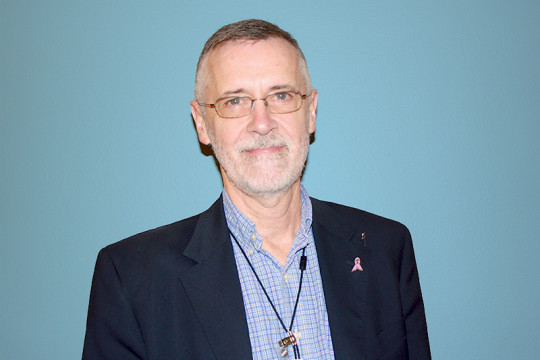
On December 2, 1980, four Catholic missionaries from the United States working in El Salvador were brutally raped and murdered by members of the El Salvador National Guard during that country’s civil war.
Much like the ISIS atrocities of today, news of the incident quickly reverberated around the globe – and forever changed Tom Rowan’s life.
Raised in a Roman Catholic family, Tom was living in Staten Island, teaching blind and visually handicapped children. News of the horror in Central America convinced him and his wife they needed to do something different with their lives. So, they moved to Sao Paulo, Brazil, where he started teaching literacy and, after several years, ministering to victims of the widespread AIDS epidemic.
“Almost a quarter of the people in Sao Paulo were tainted by the disease,” he said. “I had to learn how to handle death and dying and work with the volunteers to process what it meant to them.”
This inspired him to take the next step in his career. After six years he returned home, with a desire to become a Catholic lay chaplain. This involved getting a Master’s degree in theology and logging the hundreds of hours of clinical pastoral education needed to become certified. He did this at various hospitals and nursing homes throughout the New York metropolitan area. Six years ago he arrived at St. Barnabas Hospital as its chaplain. It’s a job he handles more or less alone, with the support of several volunteers.
So what is the job description of a hospital chaplain? Simply put, it’s about meeting the spiritual needs of patients and their families. “It begins with the process of getting to know patients and creating a bond of trust,” he says. This starts every morning when he receives a list of inpatients, seeing who’s newly admitted, and visiting them. “We don’t discriminate against anyone regardless of their religion, or against people without faith,” he says. “It’s an opportunity to sit with patients and have them tell me their story. We don’t need to provide solutions. Solutions are within the person.”
He typically walks from floor to floor of the hospital every day, stopping to speak not only with patients but with members of their family. “I see people in the waiting rooms who are going through distress for a loved one,” he says. “I’ve been here six years and can tell if they’re suffering. It can be an intense time for them and they like to know there is someone there for them.”
It may mean reciting the Lord’s Prayer or other prayers for patients or their family, or, it may mean asking them if he can pray to his God for them. “Sometimes it’s just being there with them, letting them know they’re not alone,” Tom says. “You have to intuitively know when to jump in or stay on the outside.”
It starts with learning how to listen, he says, and processing what he sees and hears. This is especially important among a population, Tom says, where the number who list “none” as their religious affiliation continues to grow. He estimates that the number of patients with no listed affiliation has grown from a third to about half of patients in the years he’s been at St. Barnabas Hospital.
“Fewer patients have a religious affiliation, but that doesn’t necessarily mean they are less spiritual,” he says. “They have faith in something, a higher being, but they are not practicing.”
Being a hospital chaplain also means comforting patients who are dying, or family members who have lost a loved one. In consoling a young woman whose aunt had just died, it meant honoring her wish to see her family member one last time by bringing her down to the morgue and saying a prayer with her as she wept. For the grieving mother of an infant who had arrived at the hospital DOA, it was about simply being with her as she spoke to her child.
“The important thing is that when you meet with a patient, it’s the patient’s story and you want to follow their lead. When you go to visit a patient, your agenda has to stay outside the door. It’s all about healing through conversation, listening, and being your true self to the patient and their family.”
 GIVING
GIVING (718) 960-9000
(718) 960-9000